The Baroque art movement, a fascinating period that transformed European art from the late 16th to the early 18th century, reflected the profound changes sweeping across the continent regarding religion, politics, and society. Originating in Rome during significant upheaval, it championed emotional engagement and visual magnificence to relay powerful messages.
This blog explores the intricate tapestry of Baroque art, unveiling its origins, key figures, masterpieces, and lasting impact on modern art. It also discusses the challenges of preserving such dynamic works for future generations.
Table of Contents
- The Origin of Baroque Art
- Key Figures of Baroque Painting
- Iconic Masterpieces of the Baroque Period
- Preservation and Restoration of Baroque Art
- Related Questions
The Origin of Baroque Art
The Baroque art movement, which swept across Europe from the late 16th to the early 18th century, wasn’t just an evolution in artistic style—it was a reflection of the time’s social, religious, and political changes.
Its emergence can be traced back to Rome, Italy, around the 1600s, when the Catholic Church aimed to reassert itself after the Protestant Reformation. The Church believed that sponsoring emotionally engaging and visually opulent art could more effectively communicate its power and religious messages. This context provided the fertile ground for the Baroque movement to take root.
Artists like Caravaggio, Bernini, and Rubens became pioneers of Baroque art, pushing the boundaries of realism, emotion, and drama. Caravaggio, for instance, introduced a novel use of light and shadow that brought an unprecedented depth and intensity to his subjects.
His technique, chiaroscuro, became a hallmark of the Baroque style. Meanwhile, like his David, Gian Lorenzo Bernini’s sculptures broke away from the static poses of Renaissance art, capturing his figures amid action and imbuing them with a sense of dynamic movement—another key characteristic of Baroque art.
The movement wasn’t confined to Italy, though. It spread rapidly across Europe, with each country adapting the style to its cultural context. In the Catholic regions, such as Spain and the Habsburg-ruled territories, Baroque art remained closely tied to religious themes, emphasizing grandeur and emotion meant to inspire devotion.
Spanish artist Diego Velázquez, for example, became renowned for his detailed, realistic portraits of the Spanish royal family, which subtly conveyed complex political narratives.
In Protestant countries like the Netherlands, the Baroque style manifested differently. Here, artists like Rembrandt focused on secular subjects, including landscapes, still lifes, and scenes of everyday life. These works still echoed the Baroque’s emphasis on realism and emotional depth but did so without the overt religious messaging found in Catholic regions.
As the 17th century progressed, the Baroque style evolved into its final phase, commonly called Rococo. This movement iteration was characterized by a lighter, more decorative aesthetic that contrasted with the grandiose and dramatic qualities initially defining the Baroque. The Rococo was particularly popular in France, where it peaked with artists like Jean-Antoine Watteau.
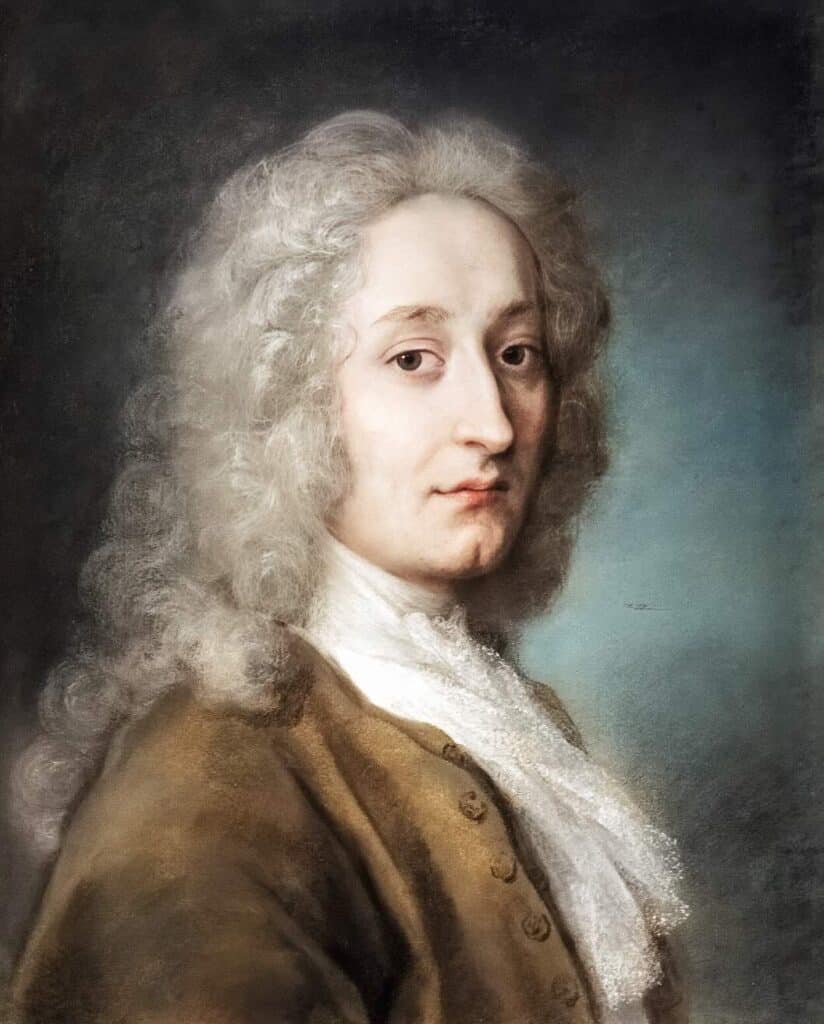
The Baroque period, in essence, was a time of artistic explosion, driven by the need for emotional resonance and visual splendor. It was a response to the turbulent social and political landscape of 17th-century Europe, reflecting its time’s desires, anxieties, and ambitions.
Through its evolution, the Baroque art movement left a lasting imprint on the art world, influencing subsequent generations of artists and remaining a pivotal chapter in European art history.
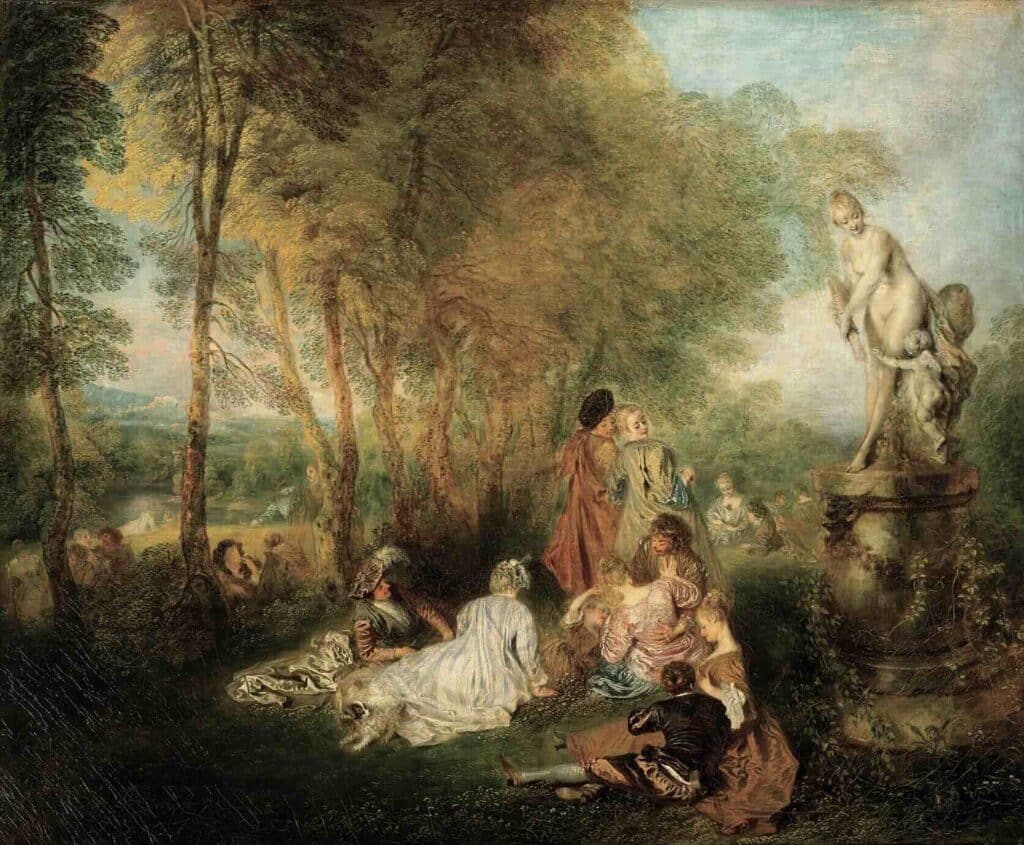
Key Figures of Baroque Painting
Moving forward in exploring pivotal artists in the Baroque era, it’s essential to explore some names beyond the commonly heralded ones and what sets their work apart in a time teeming with raw talent and groundbreaking artistic methods.
First, let’s shine the spotlight on Artemisia Gentileschi, a name that has surged from the annals of history to claim rightful recognition. As a female artist in a male-dominated space, Gentileschi’s narratives stood out for their vivid, often brutal depictions of feminine power and suffering. Her masterpiece, “Judith Slaying Holofernes,” displays her mastery over the tenebrism technique, previously popularized by Caravaggio, with a gravity and intensity that convey not just a scene but an experience, making her one of the first to embed such palpable emotion into canvas.
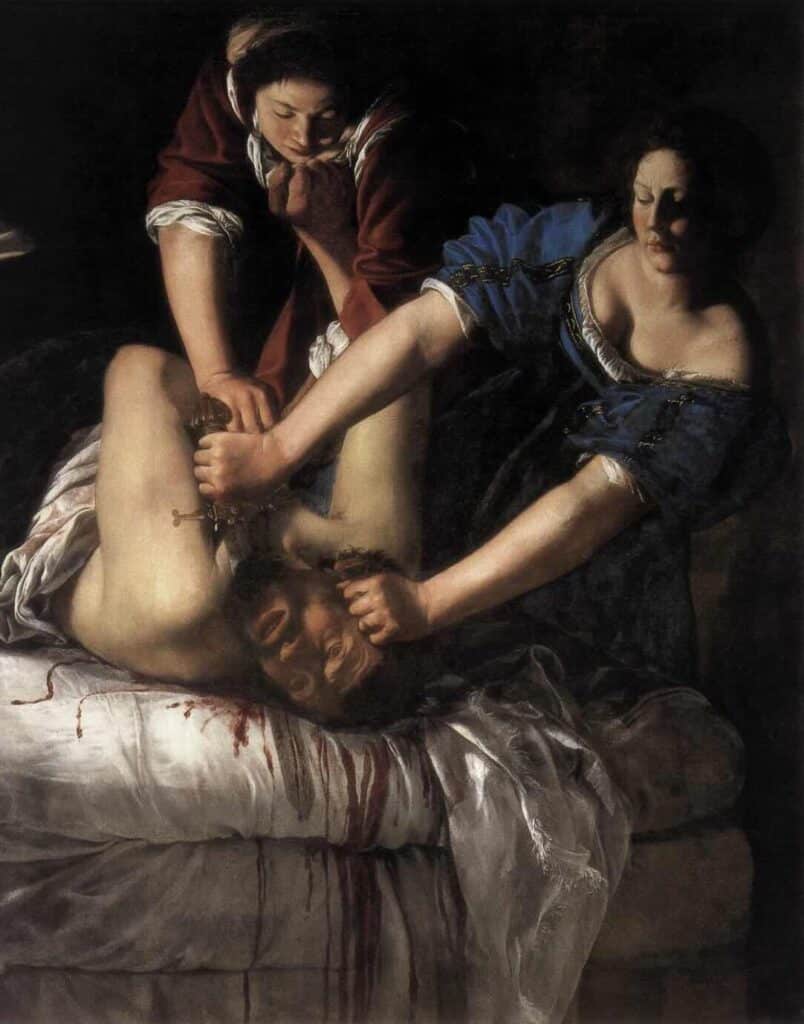
Next, we cannot overlook Peter Paul Rubens, although previously mentioned, deserves a deeper look for his work’s sheer volume and diversity. Rubens was not just an artist; he was a diplomat, moving through courts and cultures, which reflected in his compositions—the dynamic figures, a sense of movement that seems to leap off the canvas, and a fusion of the intellectual rigors of the Renaissance with the emotionality of the Baroque make his work, like “The Descent from the Cross,” stand as monumental pieces not just in size but in artistic endeavor.
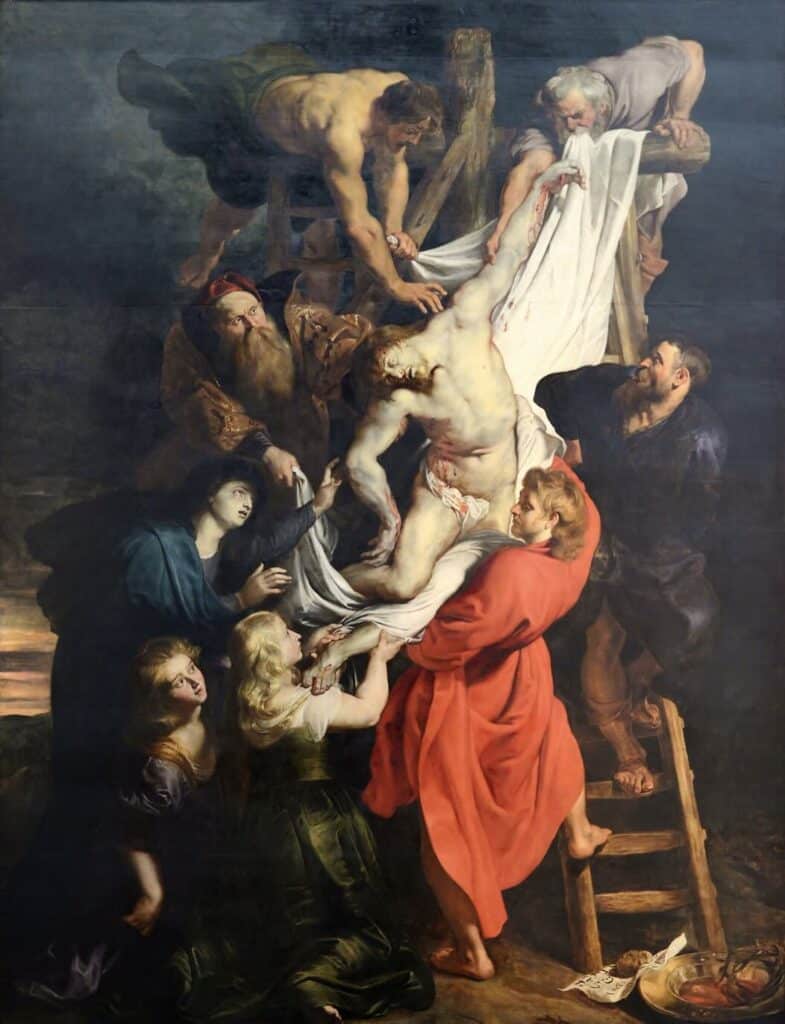
These artists, each in their own domain, pushed the boundaries of what art could encapsulate and how it could move, engage, and transform the observer. Their works, characterized by a blend of dramatic intensity, emotional depth, and often, a personal touch that bore their unique signature, kept the Baroque spirit alive—a spirit characterized not just by its flamboyance but its profound grasp on the human condition.
Through their creations, they invited viewers, listeners, and even future generations to observe and feel, think, and immerse themselves in the Baroque era’s myriad experiences.
Iconic Masterpieces of the Baroque Period
Certain masterpieces stand as vital signposts in the labyrinth of Baroque art. Each tells a distinct and gripping story that pulls the viewer into its depth. These works, by legendary artisans, bring to life the rich emotionality and dramatic flair characteristic of the period.
Among the notable paintings is Caravaggio’s “The Calling of St. Matthew.” This piece, hanging in the dim light of San Luigi dei Francesi in Rome, depicts the moment Jesus Christ beckons Matthew to follow him. Caravaggio’s knack for realism and his pioneering use of chiaroscuro bring a cinematic quality to the scene. The viewer is drawn into the emotional complexity of Matthew’s hesitant yet transformative moment of decision.
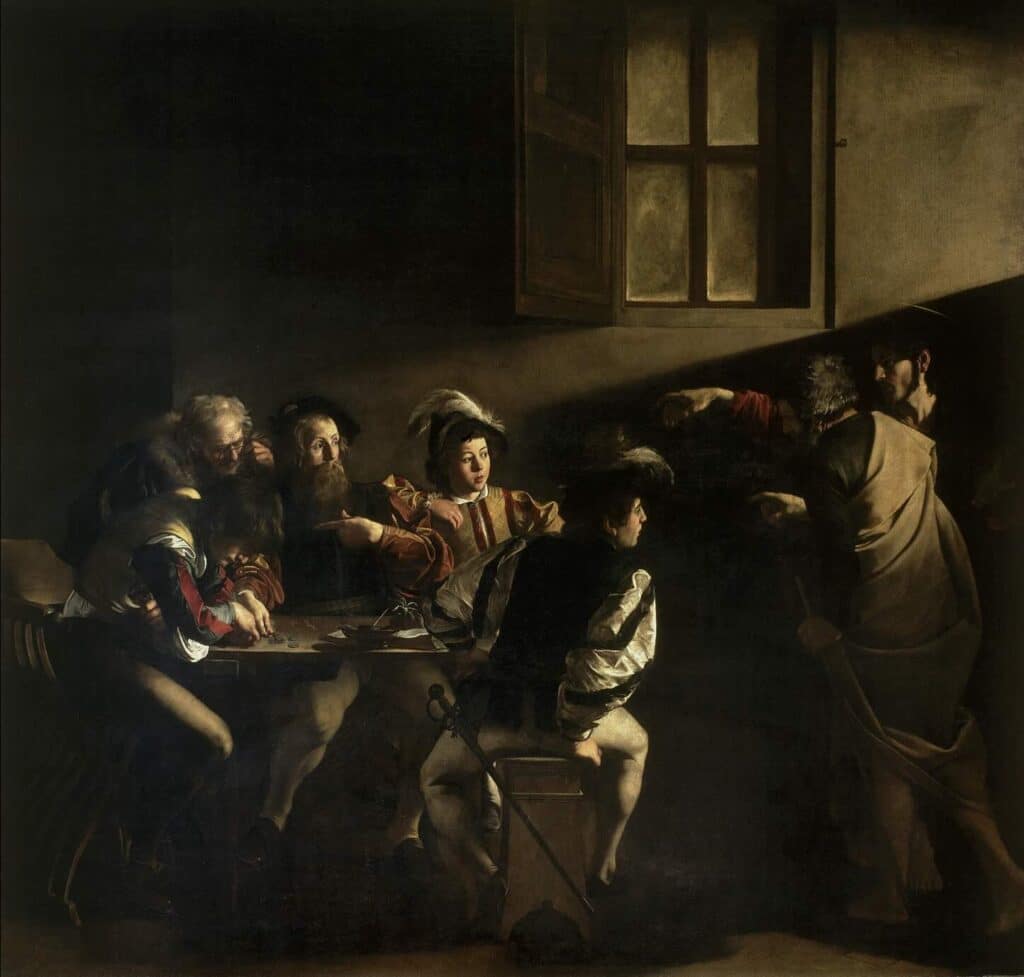
On the other hand, Johannes Vermeer’s “The Milkmaid” exemplifies the Dutch Golden Age’s focus on domestic tranquility and the beauty found in everyday tasks. The painting’s luminous portrayal of a simple act, imbued with dignity and a sense of calm, underscores the Baroque era’s broader range—not just grandiosity and drama, but also an intimate celebration of the human condition.
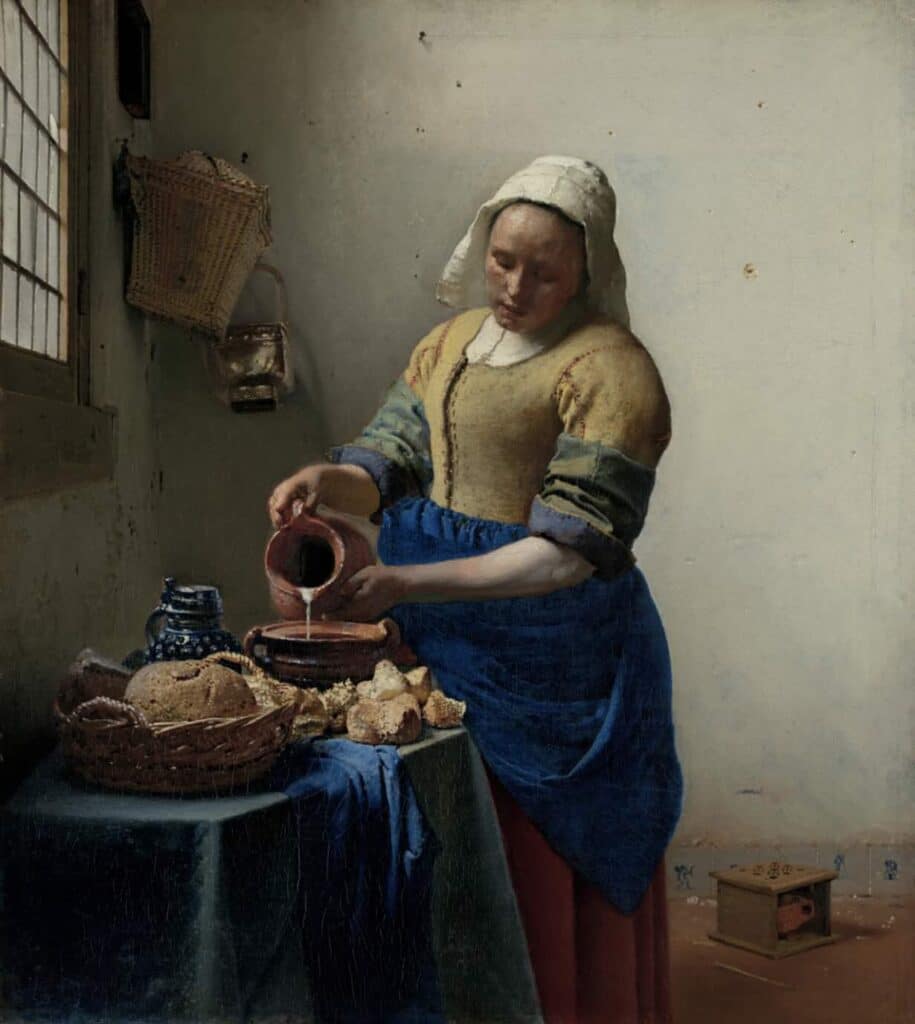
Each of these paintings serves as a testament to the artist’s technical skill and as a narrative vessel, conveying stories that resonate with the universal themes of choice, perception, community, dignity, and salvation. Through its canvases, the Baroque period becomes a vibrant stage where the drama of human life unfolds in all its complexity.
Preservation and Restoration of Baroque Art
Baroque masterpieces, with their drama, emotion, and intricate detail, present a series of challenges concerning preservation. These artworks, ranging from expansive architecture to delicate paintings, require a nuanced approach that balances historical integrity with modern conservation techniques.
Environmental Challenges
One of the first hurdles is the environment. Many Baroque works are housed in centuries-old buildings that may not be equipped with modern climate control systems. This can lead to fluctuations in temperature and humidity, which can be particularly damaging to paintings and sculptures.
For example, wood panel paintings can warp, while humidity can lead to mold growth. To counter these issues, many institutions invest in advanced climate control systems that keep temperature and humidity levels constant, providing a stable environment that helps slow down the deterioration process.
Chemical Degradation
Another significant challenge is the chemical degradation of the materials used by Baroque artists. Over time, the vibrant pigments can fade, and the materials can become brittle. In the past, some well-intentioned restoration efforts have led to further damage.
Nowadays, conservationists use non-invasive techniques to analyze the original materials and techniques before proceeding with any restoration work. This often involves using technology such as infrared reflectography and X-ray fluorescence, which provide insights into the original condition and composition of the artworks without touching the surface.
Structural Issues in Architecture
Baroque architecture, known for its grandeur and ornamentation, faces preservation challenges. Many of these structures are still in use today, subject to the wear and tear of daily activities. Moreover, issues like water damage and settling foundations pose significant risks.
Modern engineering techniques are employed to reinforce these structures. For instance, in the case of Bernini and Borromini’s iconic buildings in Rome, experts use laser scanning and 3D modeling to understand the buildings’ stresses and plan appropriate interventions that respect the original design while ensuring the buildings’ longevity.
Public Interaction
Interacting with Baroque art and architecture also poses a preservation risk. High foot traffic can lead to physical wear and even accidental damage. To mitigate these risks, many institutions implement protective measures.
For paintings, this might mean using UV-filtering glass to prevent fading, while for buildings, barriers or guided pathways can help manage the flow of visitors, limiting their physical impact on the structure.
Financial and Logistical Hurdles
Lastly, preserving Baroque masterpieces is often an expensive and logistically complex endeavor. Funding is always a concern, with many projects relying on grants, donations, and public funding. The expertise required for such specialized restoration and preservation work is also scarce. Collaborations between institutions and international experts are common, pooling resources and knowledge to tackle particularly challenging projects.
Overcoming these challenges always involves honoring the original work. Preservation and restoration efforts aim to prevent further deterioration and bridge the past with the present. This ensures that these testaments to human creativity and expression continue to inspire and move people for generations to come.
As we explore the vibrant world of Baroque art, its grandeur, emotion, and intricate detail underscore a powerful era of artistic expression that transcends time. Through its evocative paintings, remarkable sculptures, and breathtaking architecture, the Baroque period weaves a narrative of human experience rich in depth and diversity.
While preserving these masterpieces presents an ongoing challenge, their enduring influence on modern art and culture highlights our timeless connection with the past. By safeguarding and celebrating these treasures, we keep the spirit of the Baroque alive, allowing it to continue inspiring and engaging audiences worldwide.
Anita Louise Art is dedicated to art education, great artists, and inspiring others to find and create their art. We love art that uplifts and inspires. #ArtToMakeYouSmile! #ArtToMakeYouHappy!
If you are interested in seeing any of my art, you can find out more by clicking here. If you are interested in what inspires me and my paintings, you can discover more by clicking here.
We have a free newsletter and would love you to be part of our community; you can subscribe to the newsletter by clicking here. If you have any questions, I would be happy to talk to you. You can reach me, Anita, by clicking here.
Subscribe to our Anita Louise Art YouTube Channel filled with great videos and information by clicking here.
Join us for our podcast “5 Minutes With Art.” Spend just 5 minutes a week with us to discover and learn about great art and artists. You can find out more about our podcast by clicking here.
Related Questions
Why Do People Say, ”Life Is Like Drawing Without An Eraser?
Often, artists, myself included, will use an eraser to remove any marks or measurements we may have made on a paper to measure out and organize their drawings or artwork on their canvas or paper. For most artists, having a good eraser is essential.
By clicking here, you can learn more by reading Why Do People Say, ”Life Is Like Drawing Without An Eraser?
Is Communism Good For The Arts?
Communism is not suitable for art, and for many artists under Communism art should have a purpose and way to help further the communist ideals and ideology. In a Communist society, many artists are labeled as dissidents; others are forced to use their talents to create propaganda art.
By clicking here, you can learn more by reading Is Communism Good For The Arts?
12 Years Leonardo Painted Mona Lisa’s Lips, Facts Or Fiction?
There is no evidence to show that Leonardo da Vinci spent 12 years painting the Mona Lisa smile. Most scholars believe that he painted the painting in 4 years but then had the painting much longer in his possession. He could have worked on it a bit or adjusted it when he had it in his possession, but there is no evidence to show that.
By clicking here, you can learn more by reading 12 Years Leonardo Painted Mona Lisa’s Lips, Facts Or Fiction?

